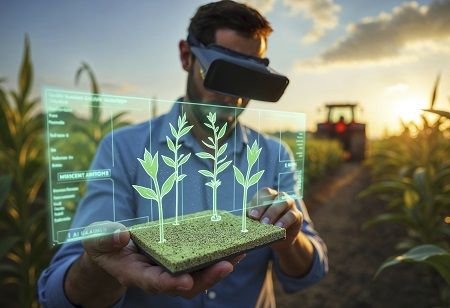Key Takeaways
- Agritech in Asia is transforming traditional agriculture, enhancing sustainability and efficiency.
- Technological advancements, including AI and blockchain, are driving innovations in farming practices.
- The AgriTech market in Asia is projected to grow to USD 23.16 billion by 2030, with a CAGR of 19 percent.
The Transformation of Agriculture in Asia
Agriculture plays a crucial role in Asia, providing food for 60 percent of the global population and serving as a foundation for numerous industries. As the sector evolves, it is projected to grow by 3.28 percent in FY25, largely driven by advancements in agricultural technology, or agritech. This shift is redefining traditional agricultural practices into more advanced, sustainable, and cost-effective systems.
Several factors contribute to this agritech transformation, including increasing population, food security concerns, urbanization, government policies, and a focus on sustainability. Precision farming has been at the forefront, improving crop production while promoting sustainable practices.
The agritech landscape comprises various innovations aimed at enhancing productivity. Among the notable trends is farm automation, which reduces manual labor and optimizes water use through intelligent irrigation systems. Another significant development is the application of blockchain in agriculture, which ensures quality control and enhances food safety by creating transparent supply chains. For example, DiMuto, based in Singapore, uses blockchain to trace fresh produce and reduce food loss, adhering to international standards.
Vertical farming is another promising practice that allows farmers to maximize urban space while reducing water consumption—Sustenir Agriculture in Singapore exemplifies this with high-nutrient crops grown using 90 percent less water than traditional methods.
Smart farming incorporates advanced technologies such as AI, data analytics, and IoT to monitor crops and optimize operations. AI-enabled systems provide real-time insights on plant health, allowing for timely interventions and minimizing chemical use. Drone technology is revolutionizing the sector by facilitating crop monitoring and improving farming operations, as demonstrated by projects from the International Rice Research Institute in India and the Philippines, which effectively integrate drones into agricultural practices.
The future of agriculture in Asia looks promising, with projections estimating that the agritech sector could grow to USD 23.16 billion by 2030. This growth will be fueled by ongoing innovation and the integration of technologies like robotics and cloud computing, ensuring a sustainable food supply chain.
In summary, Asian agriculture is moving towards a more sustainable and efficient future, deeply benefiting from advancing technology. The rising adoption of agritech enables farmers to meet the growing demands for food while addressing environmental challenges, positioning agriculture as a vital component of the region’s economic and social development.
The content above is a summary. For more details, see the source article.















